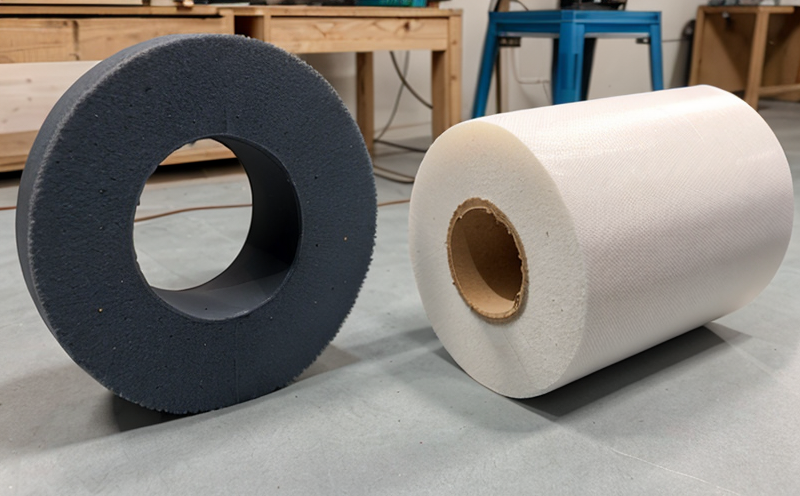BS EN 10002 Tensile Testing of Metallic Furniture Frame Materials
The BS EN 10002 standard is a crucial part of the European Union's regulatory framework for ensuring the quality and safety of metallic furniture frame materials. This test measures tensile strength, which indicates how well a material can withstand pulling forces without fracturing or deforming permanently. For furniture manufacturers, this is essential to ensure that their products meet both aesthetic and functional requirements.
The tensile test follows specific procedures laid out in the standard to guarantee accurate results. It involves attaching a specimen of the metallic frame material to a testing machine with a known gauge length. The machine then applies a gradually increasing load until fracture occurs. Careful attention is paid to specimen preparation, which includes ensuring the correct dimensions and surface finish to minimize variables.
The importance of this test cannot be overstated for several reasons. Firstly, it ensures that furniture frames can support the weight they are designed to carry without compromising safety or structural integrity. Secondly, it helps manufacturers maintain consistent quality across their product lines, which is essential for brand reputation and customer satisfaction. Lastly, compliance with international standards like BS EN 10002 can open doors to export markets where these standards are recognized.
Compliance testing under this standard also aids in identifying potential issues early in the design process, allowing manufacturers to make necessary adjustments before product launch. This proactive approach not only enhances safety but also reduces the risk of costly recalls and legal challenges. Furthermore, regular tensile tests can help identify any changes in material quality or processing that might affect performance over time.
In addition to its role in ensuring structural integrity, BS EN 10002 testing plays a vital part in sustainability efforts by helping manufacturers choose materials that are both strong and environmentally friendly. By selecting high-quality metals like steel or aluminum, furniture producers can create durable products with lower long-term maintenance needs. This aligns with the growing trend towards eco-friendly design practices within the industry.
For quality managers and compliance officers involved in this process, understanding not only what is required by the standard but also why it matters provides valuable insights into meeting regulatory requirements effectively while enhancing overall product performance.
Why It Matters
Tensile testing of metallic furniture frame materials under BS EN 10002 is critical because it directly impacts the safety, longevity, and aesthetic appeal of furniture products. By assessing how well these materials can withstand tensional forces without breaking or deforming irreversibly, manufacturers ensure that their frames will hold up to expected use conditions.
- Safety: Ensuring that furniture frames do not fail under normal loads reduces the risk of accidents caused by structural failures. This is particularly important for heavy items like beds or office chairs where improper strength could lead to injuries.
- Longevity: Strong materials contribute significantly to the durability of furniture, allowing products to last longer with minimal wear and tear. Over time, this translates into cost savings for consumers who do not need frequent replacements.
- Aesthetic Appeal: Properly designed frames made from strong metals enhance the visual appeal of furniture pieces. Consumers appreciate well-crafted items that stand out both functionally and aesthetically.
In summary, tensile testing under BS EN 10002 is not just about meeting regulatory requirements; it's about delivering high-quality products that meet customer expectations while contributing positively to the environment through sustainable practices.
Scope and Methodology
The scope of BS EN 10002 pertains specifically to tensile testing of metallic furniture frame materials. This includes various types of metal commonly used in construction, such as steel, aluminum, brass, and zinc. The method involves several key steps:
- Specimen Preparation: Specimens are cut from the material according to specified dimensions (typically 50 mm x 12.5 mm cross-section). It is crucial that these samples represent typical conditions found in actual furniture frames.
- Tension Application: Using a universal testing machine, tension forces are applied gradually until the specimen reaches its breaking point. Care must be taken to ensure consistent loading rates throughout the test.
- Data Collection: During and after the test, data regarding maximum load capacity, elongation at fracture, and other relevant parameters are recorded accurately.
The results of these tests provide valuable information about the mechanical properties of different metals used in furniture manufacturing. This knowledge allows manufacturers to select optimal materials for specific applications based on strength requirements, cost considerations, and environmental impacts.
International Acceptance and Recognition
- European Union: BS EN 10002 is a recognized standard within the EU, ensuring uniformity in testing procedures across member states.
- Nordic Countries: Norway, Sweden, Finland, and Denmark have adopted this standard for their furniture manufacturing industries.
- Brazil: Brazil has incorporated BS EN 10002 into its national standards to ensure product quality consistency.
- Australia: Although not officially recognized, many Australian manufacturers voluntarily adhere to these international standards for export purposes.
The widespread acceptance of BS EN 10002 reflects its importance in maintaining high levels of safety and performance across diverse markets. By adhering to this standard, furniture manufacturers demonstrate their commitment to producing reliable, durable, and safe products that meet global expectations.





